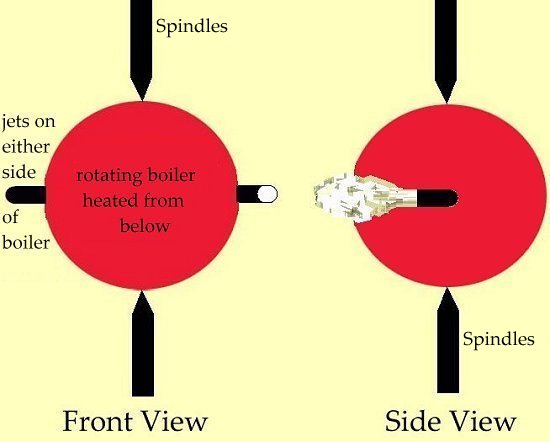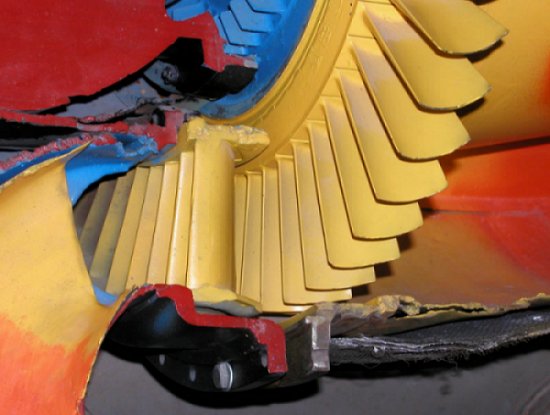Avery's Turbine
Today, Avery's turbine. The University of Houston's College of Engineering presents this series about the machines that make our civilization run, and the people whose ingenuity created them.
Most of the power we use today is generated by nuclear energy or coal or oil. What's not so well understood is that all such power plants, like their cousin, the hydroelectric dam, ultimately use turbines to generate power.
At the base of a dam are water turbines. Oil, coal, and nuclear energy are used to boil water and drive steam turbines. A burned fuel/air mixture is used to drive a gas turbine. In every case, fluid passes through some kind of turbine blading to provide a huge portion of the power we use today. (Automobile engines are among the few types that haven't been taken over by it.)
Any book on turbine origins begins with steam-powered toys in Egypt, two thousand years ago. But that's a bit of a red herring. Steam turbines didn't become commonplace until Charles Parsons be-gan building them in the 1890s. So what came in between?
Engineer Frederic Lyman tells about a little-known figure in the creation of the steam turbine. He was William Avery. Born in 1793, he grew up working as a mechanic in New York State.
In 1831, he and a friend were granted a patent for a steam-powered device very similar to one of those ancient Egyptian toys. Jets of steam, emitted from either end of a whirling propeller-like tube, drove it. By that time, Watt and others had already tried and failed at creating rotary steam-driven machines. And the French had just be-gun developing the water turbine.
Modern steam turbines don't work the same way as Avery's. They direct steam through a succession of rotating blades. Each stage removes energy and reduces the steam pressure. The aerodynamics of those blades gets very complex.
In Avery's turbine, steam flowed from the hub out through the tip where it escaped as a driving jet. The tips approached the speed of sound and, when one of Avery's cast iron rotors failed, its fragments tore through three floors of a building.
To get power out at useful speeds, Avery used a series of belts and pulleys. Yet the machine worked. By 1837, he'd built maybe seventy engines. They developed around twenty horsepower and were put work driving sawmills, cotton gins, gristmills ...
Among his other engineering accomplishments, Avery also built what was probably the first steamboat on the Erie Canal. But he died at 47, and the company that manufactured his turbines went bankrupt soon after. Another half century passed before Parsons' turbines appeared.
Then the electric generator came on the scene, and it required a high-speed drive. The turbine was the natural mate to the gen-erator, which was now the perfect means for putting its power to use. The ghost of William Avery could now smile at last.
What Avery had begun Parsons could now bring to fruition -- and bring to resounding success as well.
I'm John Lienhard, at the University of Houston, where we're interested in the way inventive minds work.
F. A. Lyman, A Practical Hero: Or how an obscure New York mechanic got a steam-powered toy to drive sawmills. Mechanical Engineering, February 2004, pp. 36-38.

Possible form of the rotating turbine-like device built by Heron of Alexandria (commonly referred to as Hero's Turbine)

Turbine blades within Great Britain's first jet aiplane engine, the Whittle W-1. The yellow row of blades on the left is static. It guides the heated gas into the rotating row of yellow blades on the right. (Image and photo both by John Lienhard. Whittle jet engine may be seen at the Lone Star Flight Museum, Galveston, TX)